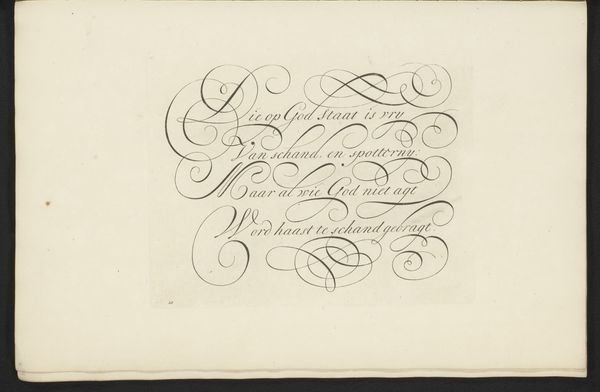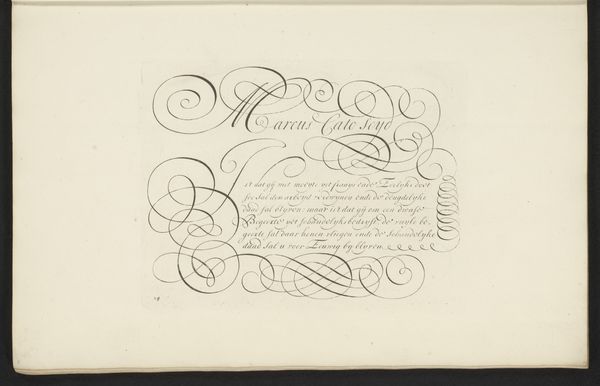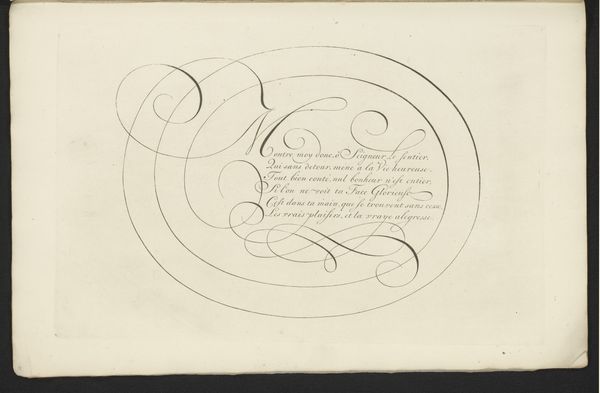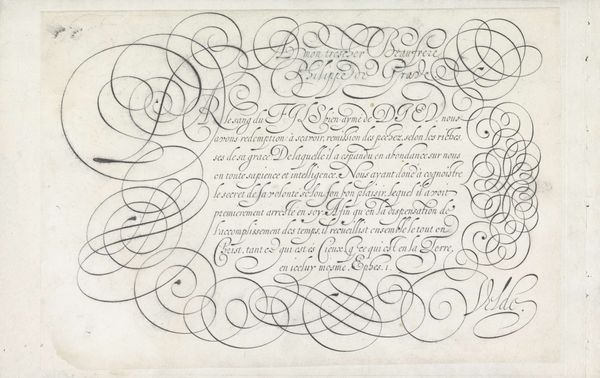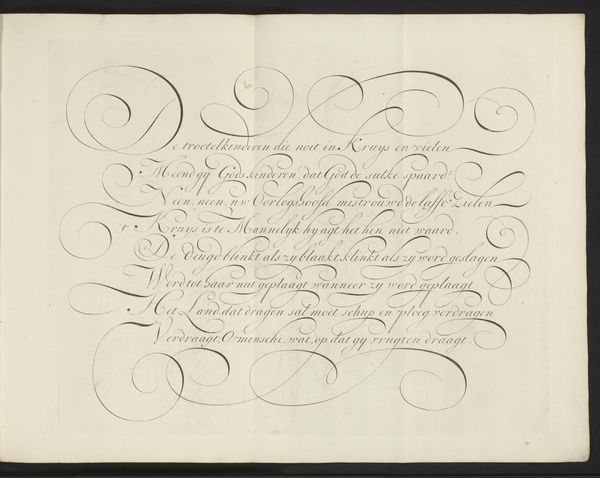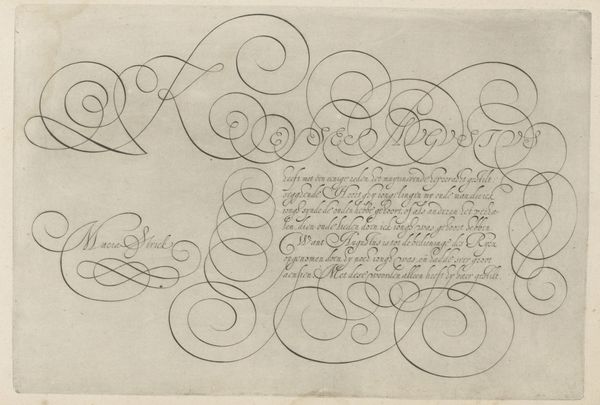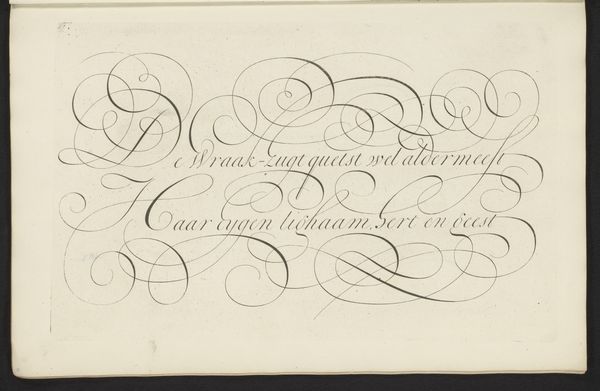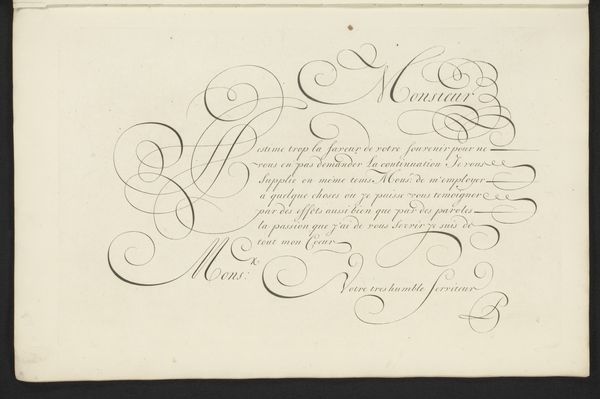
drawing, paper, ink
#
drawing
#
baroque
#
paper
#
ink
#
geometric
#
calligraphy
Dimensions: height 323 mm, width 203 mm
Copyright: Rijks Museum: Open Domain
Curator: Looking at this work titled "Schrijfvoorbeeld: Wie kruypt nog met syn Zinnen (...)" by Bastiaan Boers, dating from 1660 to 1751, it strikes me as a fascinating exploration of the relationship between language, craft, and artistic expression within the context of Baroque aesthetics. Editor: Whoa, talk about swirls! It feels like I'm looking into the eye of a gentle, calligraphic hurricane. Does anyone else get a feeling like words are trying to dance their way off the page? Curator: Exactly! Boers utilizes ink on paper not merely as a vehicle for text, but elevates the very act of writing to an art form. Think about the social function too. Calligraphy was tied into systems of knowledge, record keeping, but here it borders pure artistry. The work itself tests those neat distinctions. Editor: I dig that. It reminds me a little of those illuminated manuscripts, but without the pressure of feeling overtly religious or serious. I'm almost getting the vibe that Boers was scribbling for pure joy of it all! Did you happen to notice the lines between letters? They create the feeling of one giant chain. Curator: A playful mood definitely comes across. The materials speak volumes about the possibilities present even with constrained means. Here the relationship between maker, the readily available materials, and the function all fuse. It isn't fine art meant to be hung high, but it is valued labor. Editor: It’s true, isn’t it? Each swoosh, each delicate curve, is a tiny testament to his patience and precision. When you step back and think about all that focused intention, it adds a whole other layer of... reverence, I suppose? Like, look how lovingly the creator has formed each stroke. Curator: Precisely! And beyond the aesthetics, this showcases the broader understanding of 'art' at the time and its interaction with material culture and pedagogical techniques that circulated around that area of Europe at that moment. I wonder who handled this next and in what condition? Editor: It's pieces like this that makes me think of history less as a timeline and more as an ecosystem. Curator: I agree wholeheartedly. Viewing it through the lens of labor, the relationship to commodity, this offers fresh perspective. Editor: Alright, I think my heart has fully merged with the page now. Thanks! Curator: Likewise, a fascinating exploration through focused looking.
Comments
No comments
Be the first to comment and join the conversation on the ultimate creative platform.
